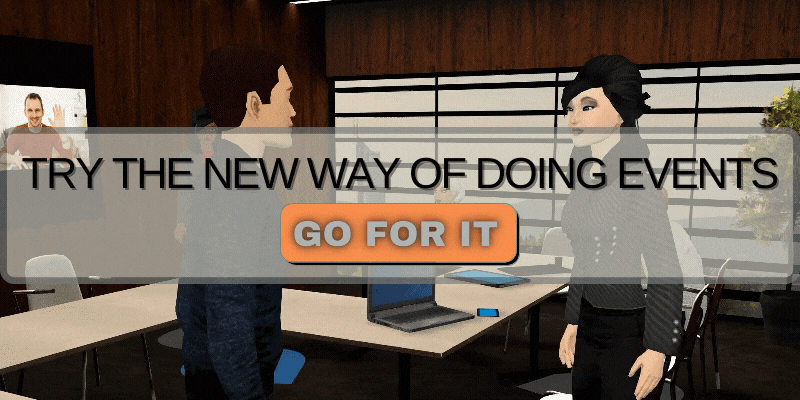The Why: Host A Virtual Job Fair Online
Virtual and Hybrid Job Fairs maximize job seeker attendance and speed recruitment. Here are some of the key benefits:
Remove Geographic Barriers
Going virtual with your company’s career fairs and expos mean improved reach and chances to attract the right hires because you are no longer limited by your physical location. Virtual job fairs can be accessed from the comfort of your own home. This alone is a first step to ensuring your online job fair’s success.
Improved User Journey and Experience
Online job fairs are best for recruiting the right hires because they connect job seekers with employers in a seamless user experience leveraging group or private one-on-one chat and video calls as well as one-to-many video broadcasts.
Generate Revenue & Lower Costs
Taking your career fair online not only maximizes the job seeker attendance. It also offers a better ROI allowing companies to be present and promote their brand while saving massive costs spent on traditional job fairs.
Better Hires
During an immersive virtual career fair, employers can efficiently communicate with targeted and diverse talent pools. Engage with their ideal candidates, hold interviews on the spot and offer a better and more engaged experience by decreasing response times to candidates both during and post-event.
The How To: Host An Immersive Virtual Job Fair
Organizing a virtual career fair makes the set-up process much easier and faster, it still requires a lot of hard work to ensure its success. Here are the 5 most important steps to help you through hosting a successful online virtual job fair.
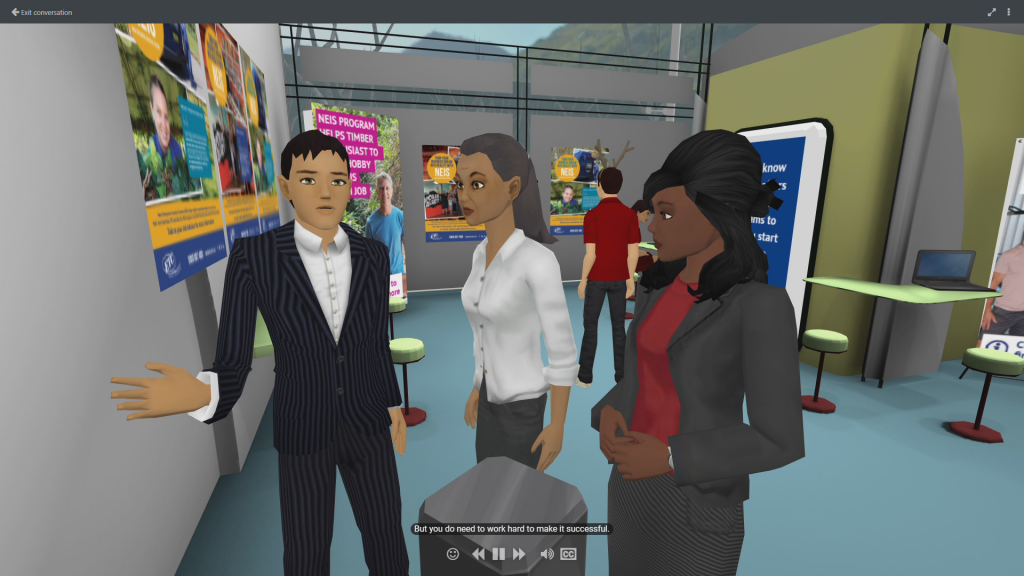
1. Build your strategy
Like with any activity offline or online you will want to clearly define a plan. Here are a few starter points to consider when building your plan.
- Set a date for the virtual job fair
- Define the scope of your career fair?
- Define the attendance rate are you expecting
- Define the goals you are looking to achieve
If you are the hiring company you can go even deeper and refine your plan and be more specific with your company’s offering depending on your exact goals. For example:
- Are you only looking to provide an overall brand experience
- Are you going to focus on specific job offerings
- Are you only promoting the brand
- Will you be conducting on the spot interviews
- What content you want to promote and how much time will you have to create the content
If you are an event agency and your event is on a certain topic with multiple companies attending and multiple sponsors you will want to ensure better ROI for your sponsors and help refine the specifics with them based on what they want to achieve.
2. Set your budget
Once you have a clear plan it’s time to figure out a budget. We already know that hosting and organizing a virtual career fair is cost-effective. However, how much you are going to invest will depend on a number of factors. Here are some:
- Are you planning recurring events or a one-time event?
- How many days will the event run for and how many hours per day?
- How many streaming hours?
- Will you need the event to remain available online. If so for how long?
- What features and services you want for your virtual fair?
3. Choose a platform which fits your needs
Virtual recruiting and online career fairs are not a new concept that has just seen the light due to COVID-19 restrictions.
Another thing to note: The few different types, 2D platforms and 3D immersive.
Both virtual however while 2D web conferencing platforms like Zoom and WebEx, for example, are great tools to use, you will want to remember that generally, they leave users hungry for more interactivity and connection especially now, a year in the global pandemic. This is one of the reasons that lead to more platforms spanning from 2D representations of physical spaces to fully interactive, 3D environments giving you more options to choose from when selecting the online platform and technology for your virtual career fair.
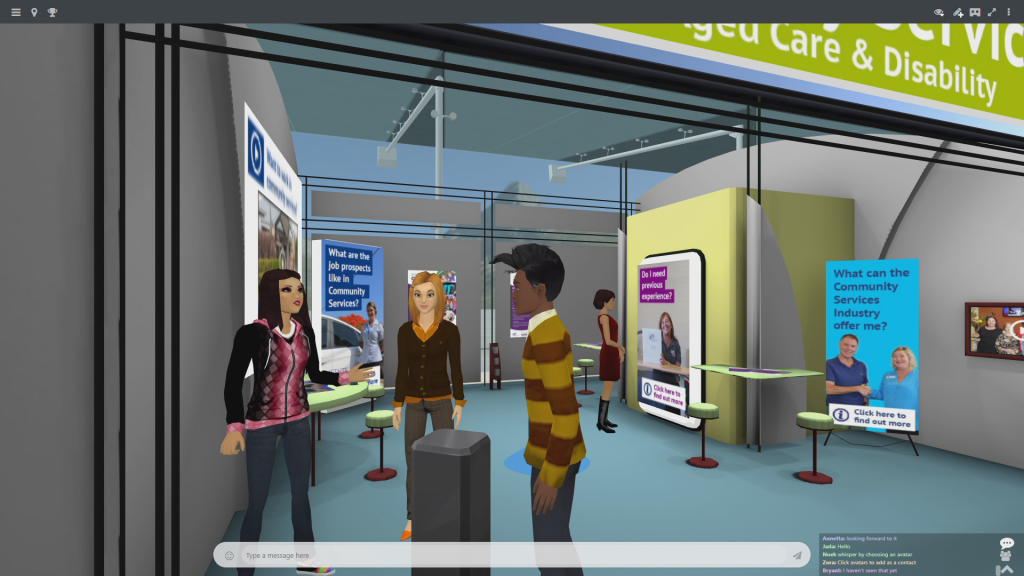
The features will generally dictate your choice so here are a few features to take into consideration:
Accessibility & Ease of Use
Easy to navigate, no downloads, installations or Flash, accessible on all modern devices and browsers, and 100% mobile friendly are currently preferred features to begin with for online career fairs.
Interaction & Communication
How do you see the interaction process between job seekers and employers? Or if you are a company how can you efficiently connect with job seekers? Screenshare, one-to-one or group, text, audio and video chat, Q&A sessions, workshop options, and breakout rooms are must-have features.
Design & Customization
Flexibility to allow for a fully-branded virtual experience within virtual stands and booths for increased exposure. This is where 3D immersive virtual event platforms perform beautifully because they allow for more customization options for a modern interactive experience.
Flexibility & Integrations
Can the platform support you to pivot back to live or hybrid job fairs while still keeping the benefits of the online virtual scenario? Does it offer integration options for example for ticketing or sponsors?
Engagement & Gamification
What are the tools the platform offers to increase engagement? The ability to post jobs & receive applications in real-time during the event. But also interactive booths and content. Downloadable content but also trivia quizzes, leaderboards, scavenger hunts, escape rooms
Data & Analytics
Does the platform allow you to analyze performance and participation? Metrics such as attendance breakdowns and engagement with booths and content offerings are key to improving future events. Analyze them to identify features that were popular or not so popular to the candidates and adjust for future events ensuring a better ROI.
Security
Usually, at any online recruiting event, personal information sharing is high which is why it is important to choose a secure virtual event platform.
Technical & Staff Support
Ensure your peace of mind by making sure you have the option to call on the software provider for help should anything go wrong. Is there an onboarding option? A few good tips are to first make sure you clearly specify what type of support you expect and what are each side’s responsibilities and also take a dry run before the actual job fair.
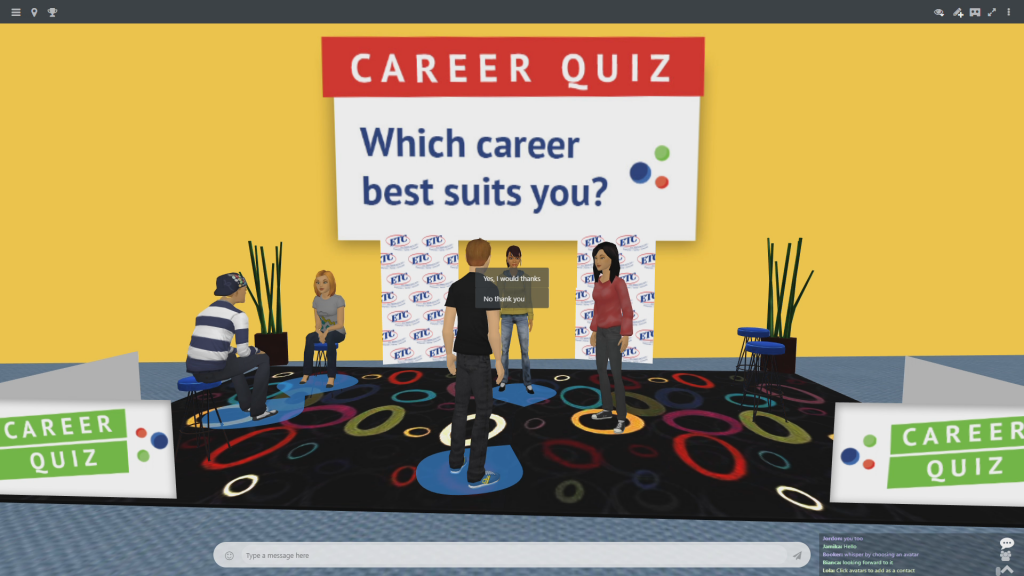
4. Event Marketing & Engagement
While setup and organization are easier for online career fairs, in order to ensure you’re going to meet your expected attendance rate you will want to promote your event by making the most of social media to get audience traction and create buzz around the job fair.
However, real-time marketing starts when the job fair starts as well and to make the most of it. Here are some ideas for your company or to share with the companies that booked a stand at your career fair.
- Custom and simple registration forms – only collect the details you need. You can then use this data for personalized recruiting during and even after the event
- Icebreakers such as Q&A sessions and live chat facilitate two-way communication
- Diverse and engaging content that can be used to tell the company story – videos, product photos, and presentations
- Adding gamification -contests such as leaderboards, sponsored prizes, or coupons. Increased engagement increases candidate retention.
- Offer content candidates can take with them in the form of downloadable content that is saved to their device.
- Ability to process real-time job applications and interviews
- Setup private room areas that allow for a more direct and personal experience and interaction much like that at a real career fair.
5. Follow Up With Attendees
You have researched, planned, designed, and executed your virtual career fair and even analyzed the metrics. Don’t forget to follow up with the candidates that your recruiters interacted with. Use contact information received during the event to follow up with potential candidates.
The metrics collected will assist you to reach out to the potential candidates that haven’t applied yet or may have more questions. Even better, you can track candidates who moved to the next step in the hiring process to track the overall success of the event.
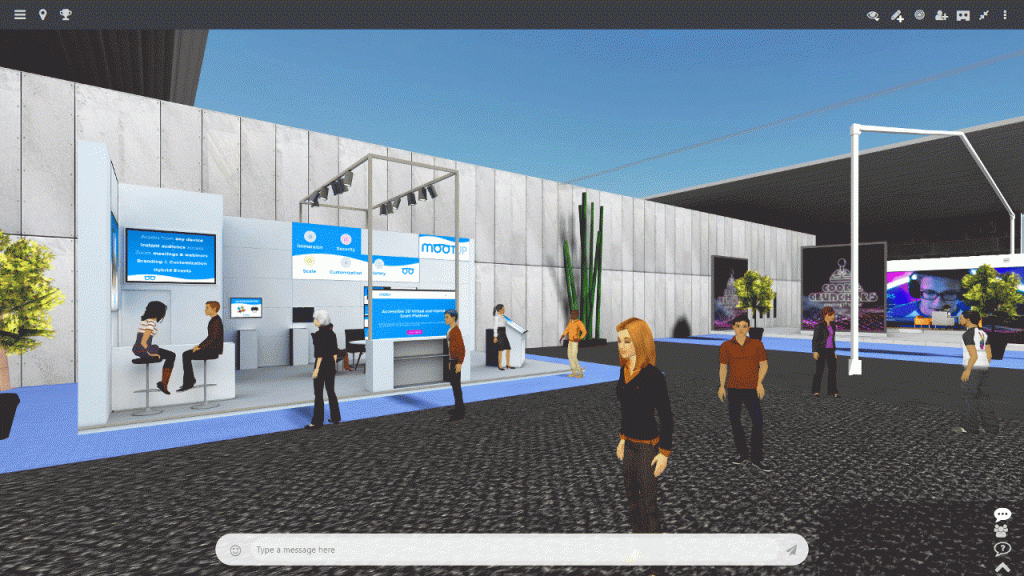
Why MootUp & Conclusion
It’s clear face-to-face meetings will still be important but they can now be moved back in the hiring process once interest levels on both sides are high.
Utilizing a unique technology MootUp was developed to provide all these features and capabilities across the widest range of devices possible including smartphones, laptops, tablets, and all modern VR and AR headsets.
Scalable to match the largest events or conferences, the platform offers 50+ instantly available 3D environments or the option to bring your own. You can have your event spaces up and running in a matter of days.
A fully integrated avatar-based system that supports self-expression and inclusion so attendees can customize to the last detail and create characters that really represent who they are.
MootUp is fully flexible and offers deep integration with tools such as Zoom, WebEx, Bluejeans, and Microsoft Teams. This way assisting you in creating virtual career fairs that provide a high level of interactivity and impressive brand building in a safe and controlled environment.
Let us show you around our platform, book a demo today and have your event up and running in weeks.
For the latest platform features and XR and virtual event news please connect with us on social:
LinkedIn: https://www.linkedin.com/company/mootup
Twitter: https://twitter.com/mootup
YouTube: https://www.youtube.com/channel/UCg1MWe2DpbKi298EWduaZng

